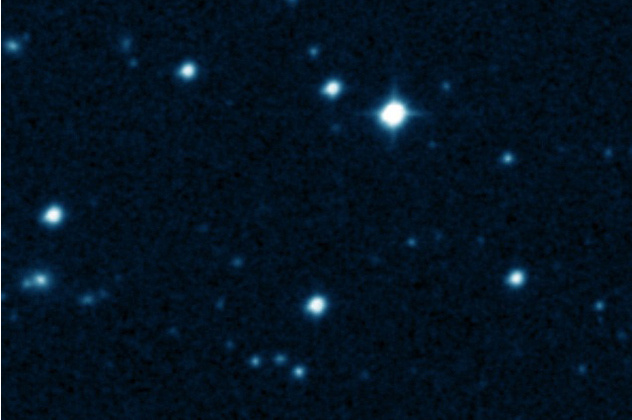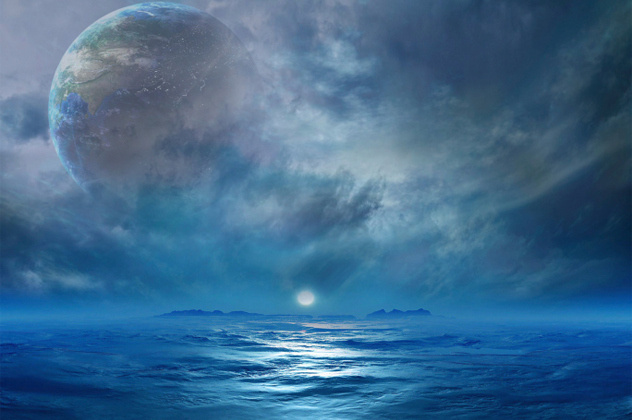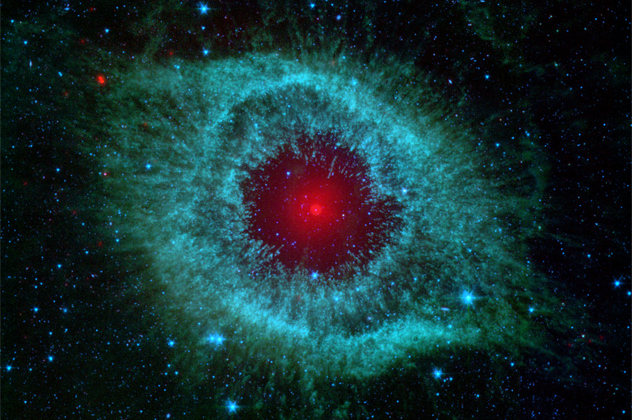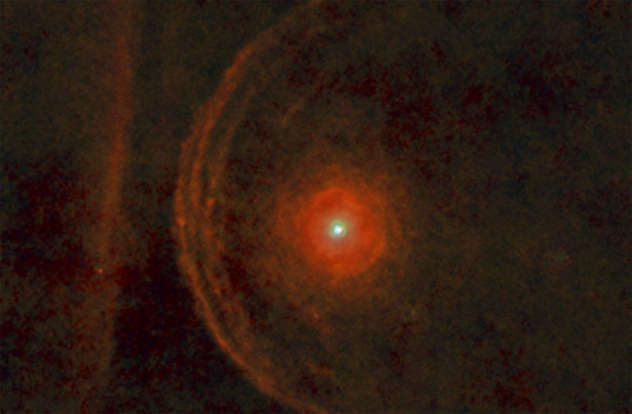Which star lives the longest, brightest, biggest, ... in the universe?
Stars are an integral part of the universe, they are also divided into countless types. There are many stars with outstanding features, creating records that make us astounded.
- The star is 25 times larger than the Sun, suddenly disappearing, causing astronomers to be confused
- The star about to explode is 100,000 times brighter than the Sun, the light emitted can be observed from the Earth
- The brightest man-made star in the night is about to enter the universe in July
1. The star will live the longest
It is difficult to determine how long a star's life lasts. Because after the star dies (ending the internal nuclear synthesis) it persists for a very long time afterwards. Therefore, researchers will determine the life of a star based on the duration of its nuclear reaction process.

Red dwarfs have the smallest mass in the stars, they can have about 7.5 to 50% of the mass of the Sun. If the mass is less than 7.5% of the solar mass, nuclear reactions - fusion cannot occur and a star cannot form.
According to scientists' estimates, a red dwarf star with the smallest mass (about 7.5% of the solar mass) can last about 10 trillion years. Meanwhile, the Sun's nuclear reaction can only last 10 billion years, less than 1000 times.
When the hydrogen source in the core is nearly exhausted, a red dwarf star becomes a blue dwarf. By the time the energy is depleted, it will turn into a white dwarf star.
2. The oldest star
Astronomers rely on the spectral analysis of stars to know their chemical components (eg hydrogen, helium, lithium). From there, they can estimate its age.

The results show that stars formed immediately after the Big Bang (about 13.8 billion years ago) are composed mainly of hydrogen and helium gas, while there are few atoms. Heavy elements, are the oldest stars.
SMSS J031300.36-670839.3 is about 13.6 billion years old and is the oldest star astronomers know to date. But, it is still not one of the first stars of the universe. Scientists have yet to discover an ancient star in the universe.
3. The faintest star
Here, we only consider the star's brightness, or the total amount of electricity emitted by the star such as photons (light particles) and ignore the distance.

The star with the lowest brightness today that scientists know is a red dwarf, 2MASS J0523-1403. But it will soon be "lost" in the future by a black dwarf star. Due to the depleted energy, the light of a white dwarf is very low, but it takes a very long time for it to lower its temperature and become a cold star covered by carbon gas. , that is the black dwarf. Until now, astronomers have not yet discovered a black dwarf, probably not enough time to form a black dwarf so far.
4. The brightest star
The biggest stars are usually the brightest stars, such as our Sun. They radiate a lot of energy, are very hot and lose a lot of mass on storms and winds on the surface. They tend to form very quickly but do not last long.

R136a1, discovered in 2010 is the brightest star in the universe today. Its mass is about 265 solar masses and has a brightness of 8,700,000 times the brightness of the Sun. Because stars of this type are always reduced in mass, so it is estimated that R136a1 can have up to 320 solar masses in the past.
5. The biggest star
R136a1 is the brightest star but not the biggest star in the universe. There are many stars that are much larger than it and most are red giants. Most of these stars' lives are not so big, but when they use up hydrogen and start helium synthesis, they become much hotter and start to expand.

In the future, our Sun will also come to this process, then its size will be expanded many times, but can only become a red giant star. Stars must be at least 10 times the size of the Sun to become a super giant. The period of red supergiants only lasts from a few thousand to a billion years.
Determining the exact size of these stars is difficult, but scientists estimate that the largest stars in the universe could be 1,500 times larger than the Sun.
You should read it
- How big can the stars in the universe be?
- One of the brightest stars in the sky is about to explode
- Close up of the star is said to be a giant structure of aliens
- Discover the smallest star in the universe, about 600 light-years from Earth
- Vsmart Star 3: Snapdragon 215, dual camera, 3500mAh battery, priced at 1.79 million
- The star about to explode is 100,000 times brighter than the Sun, the light emitted can be observed from the Earth
- 14 interesting facts about the universe amaze you
- The star is 25 times larger than the Sun, suddenly disappearing, causing astronomers to be confused
- The vow of worship is the star of the Year of the Rooster 2017
- The brightest man-made star in the night is about to enter the universe in July
- Detects young star clusters surrounded by 3 concentric circles in the universe
- Honkai Star Rail: How to build March 7
May be interested

Black force - a new force in the universe, becomes even more strange

Interesting discoveries about asteroids in the solar system

What is gamma-ray burst?

NASA admits the spaceship was flying as fast as a bullet hit by UFOs

NASA announced its mission to fly directly to the Sun of a billion-dollar 'machine' in 2018

Discovering another 'super Earth' can appear to live only 21 light-years away






 One of the brightest stars in the sky is about to explode
One of the brightest stars in the sky is about to explode The brightest man-made star in the night is about to enter the universe in July
The brightest man-made star in the night is about to enter the universe in July The 8 largest objects in the universe
The 8 largest objects in the universe 10 brightest stars in the sky
10 brightest stars in the sky 10 strange and interesting facts about the universe you may not have heard of
10 strange and interesting facts about the universe you may not have heard of 14 interesting facts about the universe amaze you
14 interesting facts about the universe amaze you